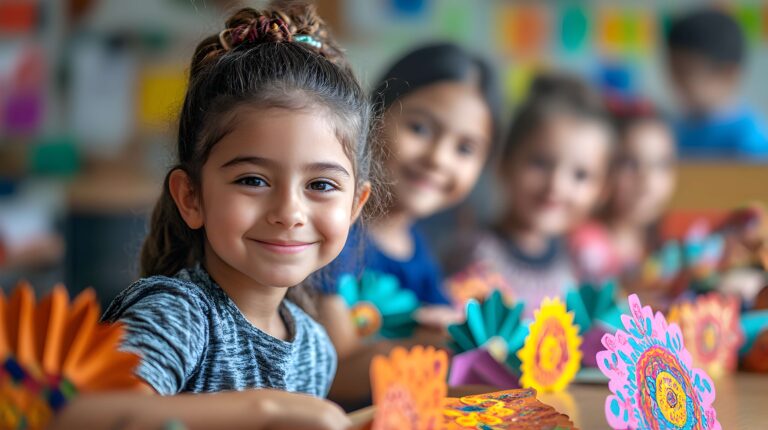
As parents and educators, we’re always looking for ways to help our children learn more effectively. One popular concept in education is the idea of learning styles. At Tutoring4Less, we believe that understanding these styles can be a valuable tool in helping each student learn and grow in their own unique academic path.
What Are Learning Styles?
Learning styles refer to the different ways individuals prefer to gather, process, and retain information. For example, does your daughter light up when she sees colorful diagrams, or does she prefer listening to explanations? Some kids are visual learners who understand best when information is presented in pictures, charts, or videos, while others are auditory learners who absorb information more easily through listening and discussing.
Just like how each child has a unique way of understanding the world, learning styles show that kids can absorb information differently – some learn best by listening, some by seeing, and some by doing hands-on activities
While there are various models, one of the most well-known is the VARK model, which identifies four primary learning styles:
- Visual: These learners prefer images, diagrams, and spatial understanding. Visual learners often remember what they see better than what they hear. They might enjoy creating mind maps, using color-coded notes, or watching educational videos. If your child frequently doodles while studying or asks to see pictures to understand concepts, they might be a visual learner.
- Auditory: They learn best through listening and speaking. Auditory learners thrive in discussions and often remember information they’ve heard, even if they weren’t taking notes. These students might enjoy listening to audiobooks, participating in class debates, or explaining concepts out loud to themselves. If your child likes to talk through problems or remembers song lyrics easily, they might have an auditory learning preference.
- Reading/Writing: These students excel with written words. Reading/writing learners often enjoy taking detailed notes and prefer to study from textbooks or written summaries. They might be avid readers and may express themselves best through writing. If your child loves to make lists, enjoys writing stories, or frequently looks up definitions of words, they might fall into this category.
- Kinesthetic: Hands-on, experiential learning works best for them. Kinesthetic learners understand and remember things through physical movement and touch. They often enjoy science experiments, building models, or using manipulatives in math. If your child has trouble sitting still while studying, likes to act out stories, or learns best when they can physically interact with the material, they might be a kinesthetic learner.
It’s important to note that most people use a combination of these styles, often with one or two being more dominant.
The Solomon-Felder Model
Another insightful approach is the Solomon-Felder model, which looks at learning preferences across four scales:
- Active vs. Reflective: How students process information
Active learners prefer to learn by doing, often through group work or hands-on experiments. They might enjoy brainstorming sessions and tend to jump into activities quickly. Reflective learners, on the other hand, prefer to think things through first. They might enjoy solo study time and need moments of quiet reflection to fully grasp concepts. - Sensing vs. Intuitive: How they prefer to take in information
Sensing learners like concrete, practical information and tend to be detail-oriented. They often enjoy learning facts and following established procedures. Intuitive learners prefer abstract concepts and theories. They’re comfortable with complexity and enjoy discovering possibilities beyond the immediate facts. - Visual vs. Verbal: How they best receive information
Visual learners remember best what they see – pictures, diagrams, flow charts, timelines, and demonstrations. They might struggle with purely verbal presentations. Verbal learners get more out of words, whether they’re written or spoken. They might prefer reading texts or listening to lectures and often benefit from discussing ideas. - Sequential vs. Global: How they progress towards understanding
Sequential learners prefer to learn in linear steps, with each step following logically from the previous one. They tend to follow logical stepwise paths in finding solutions. Global learners tend to learn in large jumps, absorbing material randomly without seeing connections, then suddenly “getting it.” They may be able to solve complex problems quickly once they have grasped the big picture.
Learning Style Tips for Parents
Understanding your child’s learning style can be a game-changer in their educational journey, and it’s never too late to explore this together! It’s completely normal for parents to feel a bit discouraged when their child struggles with learning, but it’s important to remember that every child has their own unique journey. Learning challenges are just that—challenges, not roadblocks.
By recognizing whether they learn best through visuals, listening, reading, or hands-on experiences, you can tailor study habits and activities that resonate with their unique preferences. Encourage your child to embrace their strengths and experiment with different techniques—whether it’s using colorful charts, discussing ideas aloud, diving into books, or engaging in interactive projects.
- Try out different study methods to discover what clicks for your child and makes learning enjoyable! Whether it’s flashcards, group discussions, or hands-on activities, experimenting can reveal the best fit for their unique style.
- Incorporate a mix of resources that cater to various learning styles. From videos and podcasts to books and interactive apps, using various materials can keep your child engaged and help reinforce concepts in fun ways.
- Encourage flexibility in learning approaches—don’t feel confined to just one style! Embracing a variety of methods can enhance understanding and adaptability, allowing your child to thrive in different subjects and situations.
Let’s say for example that your 3rd grader, Sam, is struggling with reading. You’ve identified Sam as a visual learner. For visual learners like Sam, reading comprehension can be transformed by adding colorful, graphic elements to the learning process – such as drawing story scenes, creating character maps, or using colored sticky notes to track plot points. By turning reading into a visual adventure, Sam can engage more deeply with the text, using drawings and visual cues to help remember and understand the story.
Embracing Learning Styles and Individualized Instruction at Tutoring4Less
At Tutoring4Less, we’re not about one-size-fits-all learning – we’re all about discovering how YOUR kid learns best! Our fun, comprehensive initial assessment is like a learning style detective mission, where we figure out whether your child is a visual learner who loves diagrams, an auditory learner who thrives on discussions, a reading/writing champ, or a hands-on kinesthetic learner who needs to move to understand.
Once we crack the code on their learning style, our awesome tutors create a totally personalized game plan. We’ll match our teaching approach to how your child’s brain naturally likes to learn, making studying feel less like a chore and more like an adventure. The result? A confident, excited student who’s actually enjoying the learning process!
Our goal is to help students improve by an entire grade level through engaging, customized tutoring that makes learning enjoyable and effective. So, whether your child is a visual learner who thrives on diagrams and colorful notes, an auditory learner who benefits from discussions and listening, a reading/writing enthusiast who loves books and written assignments, or a kinesthetic learner who needs hands-on activities to grasp concepts, we’ve got them covered at Tutoring4Less!

